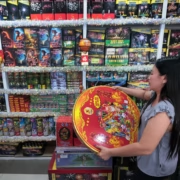Outgunned: PH’s loose firearms dilemma

More than 70 years have passed since the Philippines sought to reassert its monopoly on legitimate coercion to guarantee the security and protection of its citizens. Firearms were widely distributed to civilians during World War II to ramp up the war effort against Japan. In 1950, Republic Act No. 482 was passed to buy back loose firearms, followed by a peace and amelioration fund to underwrite these efforts.
A series of presidential decrees—PD 9 and PD 1728 of 1972, and PD 1866 of 1983—was enacted during martial law to address threats to the state by imposing severe penalties, including the death sentence, for illegal possession of firearms. More than half a million loose firearms were confiscated during this period.
The government has issued at least 13 amnesties since 1980, with some offering incentives such as allowing gun holders to sell unlicensed firearms to qualified individuals or corporations, and affordable amnesty fees ranging from P3,000 to P5,000. But these amnesties coexisted with conditions that fostered the growth of the gun economy, both legal and illegal. What began as a wartime necessity evolved into a growing economy of domestic production and importation.
Two urgent concerns have emerged: the continued proliferation of loose firearms, and their association with gun-related crimes.
Currently, the state is literally outgunned by civilians by a ratio of 7:1. There were 2.8 million firearms in civilian hands in 2010, with nearly 70 percent considered loose: either unregistered, with expired registration, or acquired illegally. The number has since grown to 3.7 million by 2017, with 2 million considered loose. These include 1.2 million firearms with unrenewed licenses, and never-registered firearms.
Former senator Gregorio Honasan, during a 2018 Senate hearing, estimated that 99.95 percent of gun-related crimes were linked to loose firearms. The police meanwhile recorded 10,936 gun-related incidents from 2022 to the first quarter of 2024, or an average of 13 gun-related incidents daily. The crimes range from armed robbery to political vendettas and land disputes. In the Bangsamoro Autonomous Region in Muslim Mindanao, the Conflict Alert monitoring system documented 16,288 incidents of gun-related violence, resulting in 11,672 deaths between 2021 and 2023.
The ability of the Philippine National Police-Firearms Explosive Office to administer legal gun ownership has improved, but its capacity to curtail the proliferation of loose firearms remains limited. From 2015 to 2023, only 165,936 illegal firearms were confiscated, a mere 8 percent of the estimated total in 2017.
As an economy, gun trade is highly profitable. In 2017, it generated P71 million in annual revenues from the issuance of permits to carry firearms, and P528 million from licenses. As new firearms are registered, previously registered firearms enter the illicit market. Case in point: there were 703,703 firearms with expired registrations as of February 2024.
While previous gun laws gave priority attention to illegal firearms, the Comprehensive Firearms and Ammunition Regulation Act of 2013 (RA 10591) marked a shift in firearm policy. It recognizes the right of qualified citizens to self-defense, allowing possession of more than 15 licensed firearms, and granting special privileges to certain groups, such as the clergy and health care professionals, to acquire permit to carry firearms without a threat assessment.
The law, however, lacks a budgetary allocation and a dedicated enforcement unit similar to the Philippine Drug Enforcement Agency, the Presidential Anti-Organized Crime Commission, or the PNP Anti-Kidnapping Group. One-stop shops and caravans for registration and licensing are not complemented by a strong campaign to address the issue of loose firearms effectively. There is no provision for smelting and de-militarization of confiscated firearms, raising concerns about their potential return to the illicit market.
The sale of firearms continues to grow, driven by market forces. Data from the United Nations Commission on Trade indicates that 8.5 million firearms were legally imported to the Philippines from 2011 to 2020, almost 30 times more than the 300,000 units imported from 2000 to 2010.
Senate Bill No. 2773 authored by Sen. Ronald “Bato” dela Rosa proposes amendments to RA 10591. These include increasing the number of ammunition that licensed civilians can own, from 50 to 500 rounds, purportedly to encourage sports shooting. Other provisions include allowing the sale, transport, and registration of firearms even during election gun bans, and decentralizing the issuance of permits to carry firearms to PNP regional directors.
While these proposed amendments focus on expanding access and flexibility for licensed firearm owners, it risks overshadowing the larger, more pressing issue of ensuring that gun regulations serve the fundamental purpose of promoting peace and public safety by curbing the illicit trade and proliferation of loose firearms.
—————–
Ed Quitoriano is a senior adviser of the Council for Climate and Conflict Action-Asia, and principal consultant of Visus Consulting.

















